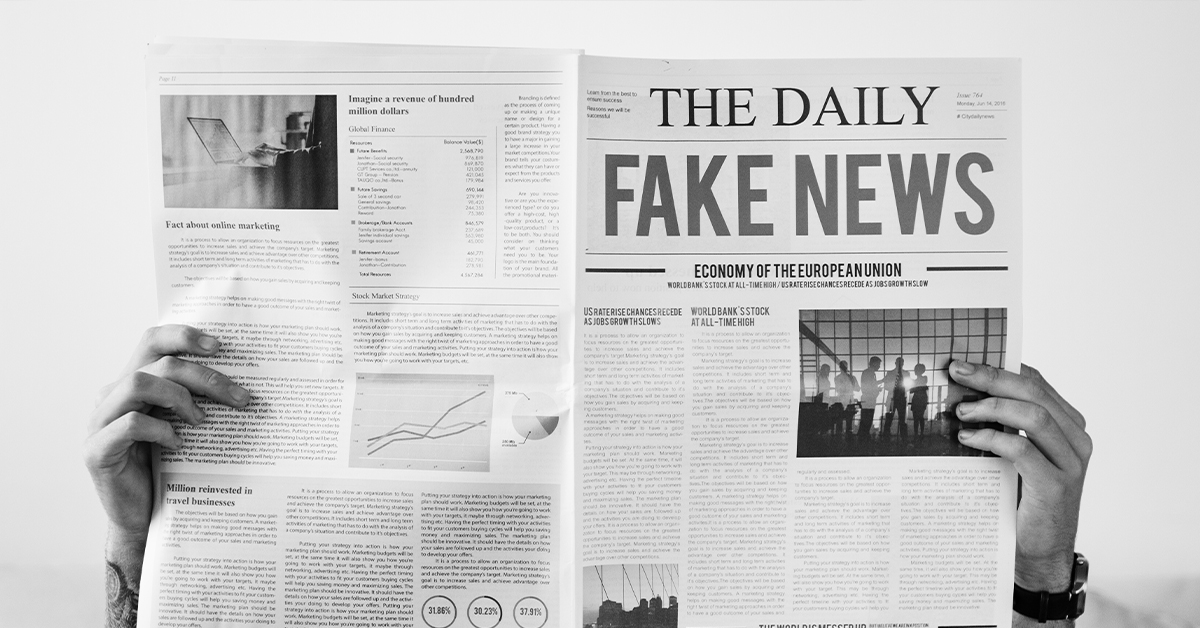Fake news spreads faster and reaches more people than the truth, which has become a major threat to peace.

Information plays a fundamental role in democratic societies. However, in recent years, we have witnessed an increase in hoaxes and fake news, which threaten the future of society. Although this is not a new phenomenon, as fake news has existed practically since the dawn of time, experts agree that the phenomenon of mass disinformation has skyrocketed with the advent of the Internet and social media.
Here’s an example. According to a 2024 report by the World Economic Forum, disinformation ranks first in the ranking of global risks in the short term, ahead of extreme weather events, social polarization, cybersecurity, and armed conflicts.
Let us bear in mind that information is not only relevant to the maintenance of democracy. It also affects such important issues as health—as we saw during the coronavirus crisis—and climate change. “Don’t look up”, they might say.
The most worrying thing is that fake news spreads faster and reaches more people than real news. This was demonstrated by a study conducted by researchers at the Massachusetts Institute of Technology (MIT) and published in the journal Science.
After analyzing 126,000 Twitter (now X) stories written between 2006 and 2017, they found that “false information spread significantly more extensively, quickly, deeply, and widely than true information in all categories of information.” According to the authors, “fake news was 70% more likely to be retweeted than true news.” The question is, why does this happen?
The role of ‘shortcuts’
María Isabel Pascual, professor at Miguel Hernández University (Spain) and specialist in marketing and consumer behavior, explains this very well in an article published in the specialized outlet The Conversation: Cognitive shortcuts play a large part in this. “If we lack the time, knowledge, or motivation, we can process a message using ‘cognitive shortcuts’ (heuristics) that make the task easier,” she explains.
When we talk about ‘cognitive shortcuts’, we are referring to shortcuts — forgive the redundancy — that our brain uses to process information without us necessarily realizing it.
Of course, cognitive shortcuts can be useful in certain contexts. A few months ago, Jose Arellano, Behavioral Scientist at BeWay, wrote about this in a post published on our social media. However, as these ‘shortcuts’ replace critical thinking, the chances of misinformation increase.
Pascual gives an example of confirmation bias. Generally, we tend to accept information that is similar to our preconceived ideas as true. On Twitter, this phenomenon is exacerbated because a user’s feed is built based on their followers. We usually follow people who have similar ideas and tastes to our own. The information we consume in the media follows the same pattern. For this reason, we prefer some newspapers or television channels over others.
Solutions on the table
In recent years, fact-checking tools have become popular, analyzing the accuracy of information in a matter of minutes. For example, Agence France-Presse (AFP) launched AFP Fact Check in 2017, considered the world’s most extensive fact-checking network due to its global coverage. More than 150 digital fact-checkers work daily to verify the authenticity of news circulating on the Internet.
Other media outlets have joined these initiatives, such as The Washington Post, or emerged recently, as is the case with the Spanish Maldita.es. Meanwhile, giants such as Google have developed their own applications: Google Fact Check Explorer.
While they are a powerful tool, they require people to be proactive in verifying whether what they are reading is correct or not.
That is why recent research suggests that greater digital literacy and nudges are useful strategies for alleviating the problem. An example of this is the study carried out by Jaime Unda, psychologist and Client Lead at BeWay, together with researchers from DIP – Detox Information, the Universidad del Rosario, and the University of Chicago.
In the context of the 2022 Colombian presidential elections, they found that exposure to a series of videos, in which Colombians interacted and demonstrated the characteristics that make us vulnerable to disinformation, reduced vulnerability to fake news.
Specifically, people who watched the videos were 30.3% less likely to consider fake news as reliable.
The intervention also had a secondary effect: participants felt more encouraged to report tweets containing misinformation.
Rational optimism
In an increasingly interconnected world, misinformation is a crucial challenge. We believe fake news not only because it is presented in a convincing way, but also because it appeals to our emotions and prejudices. Confirmation bias, information overload, and lack of digital literacy are some of the factors that fuel this problem.
However, we are not defenseless. By developing critical thinking skills, verifying sources, and encouraging informed dialogue, we can reduce the impact of misinformation and contribute to a more aware and well-informed society. By doing so, we can build a better tomorrow.
